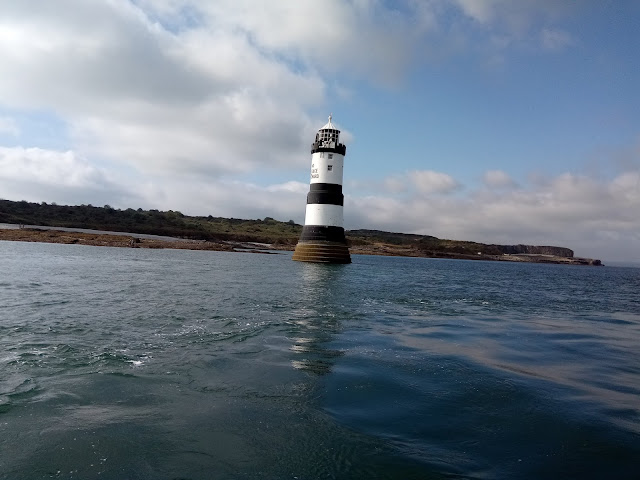If you are approaching Penmon Point from Beaumaris, the drive is a stunner, with several stopping points right up against the shore for admiring the view across the Menai Strait towards the Great Orme. Towards the end of the road lie the ruins of Penmon Priory, with a 1000-year-old font and a graveyard with carved Celtic crosses. The original building, dating from the 6th century, was destroyed by Viking invaders, and a new one was built in the 12th century. Nearby are a 17th century dovecote and St Seiriol's Well, a cell belived to have been occupied by this hermit saint. To reach the Point itself requires a drive along a toll road which leads to a car park from where there is a view across to Puffin Island. There is a tea-shop, rock pools for the kids to mess about in, and if you time your visit towards the end of a sunny day you will be rewarded with spectacular sunsets. The black and white Trwyn Du Lighthouse, built in the 1830s, stands 29 metres tall just offshore. The lighthouse was designed by James Walker, with a stepped base which has the effect of reducing the force of the waves pounding into it.
Puffin Island is a favourite destination for locally operated boat trips, mainly due to the charms of its inhabitants, which include seals and, not surprisingly, puffins. This little island lies half a mile out to sea from the lighthouse, and is now uninhabited, although St Seiriol founded a settlement on the island in the 6th century. The remains of a monastery are a reminder of that time, while a more recent human addition to the island is a 19th century telegraph station, now disused. The only way for ordinary mortals to visit the island is to take one of the boat trips around it, as actual access is restricted to naturalists with special permits. The island enjoys Special Protection Area (SPA) status.
Map of the area.
 |
| Trwyn Du Lighthouse. |
No comments:
Post a Comment